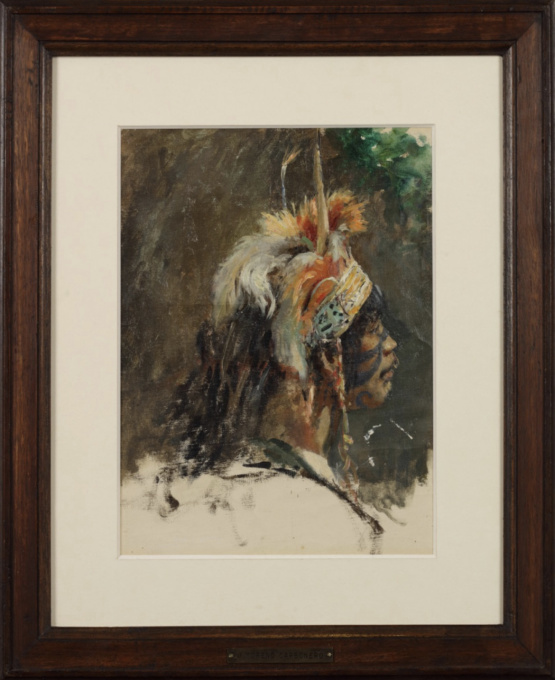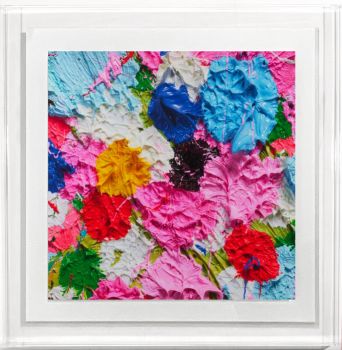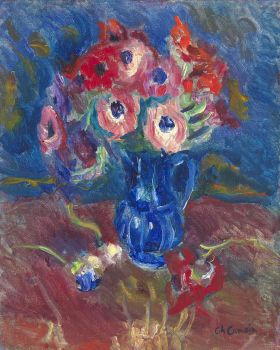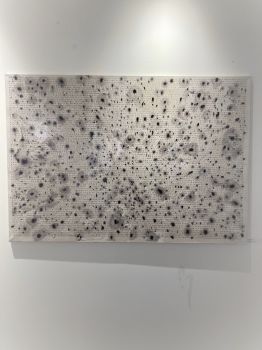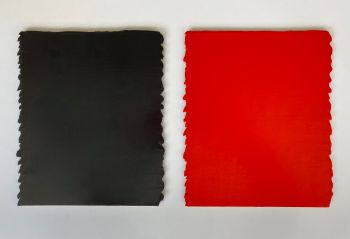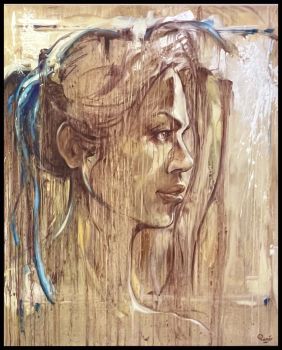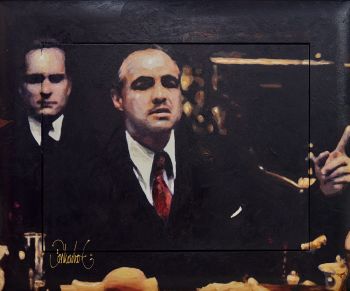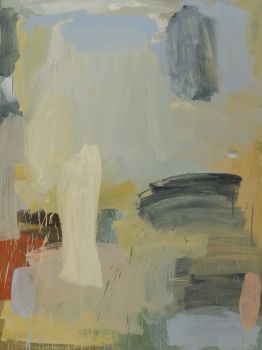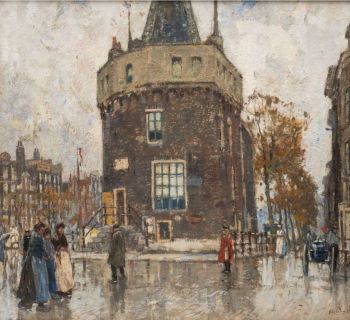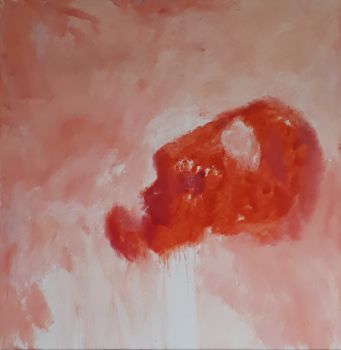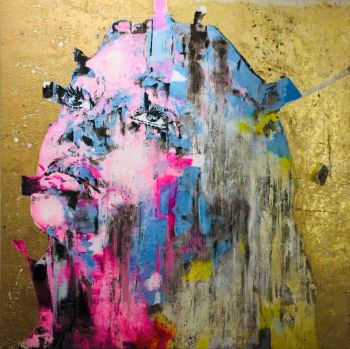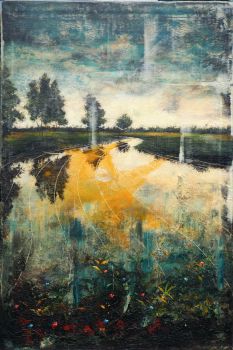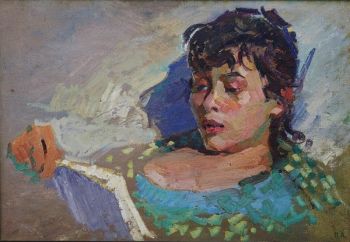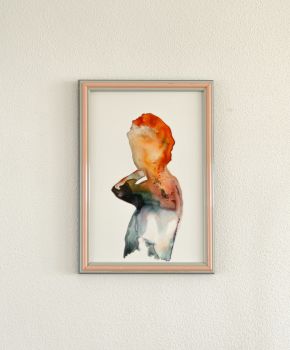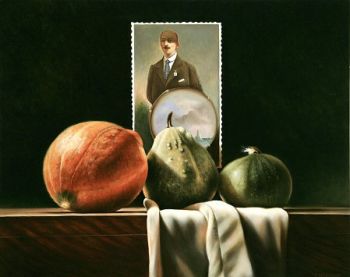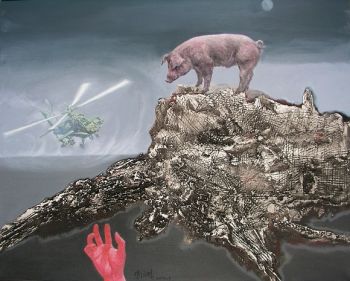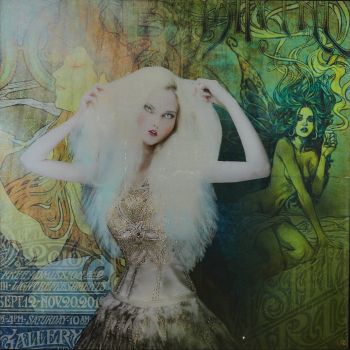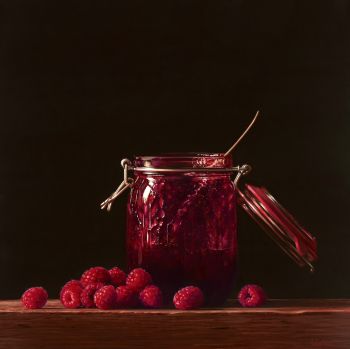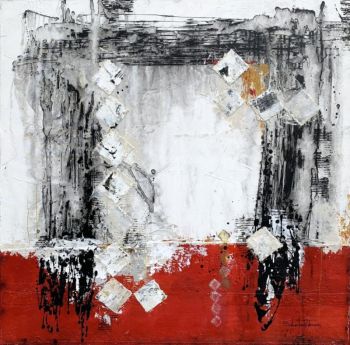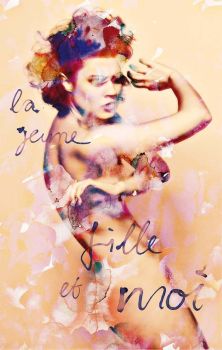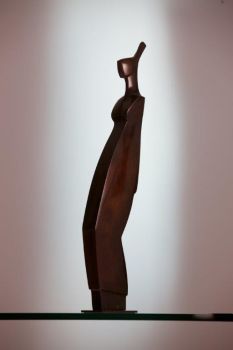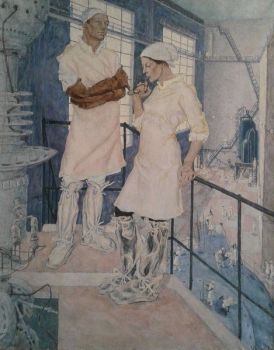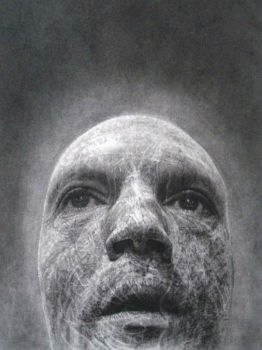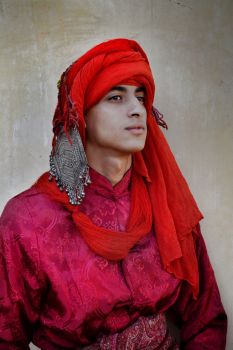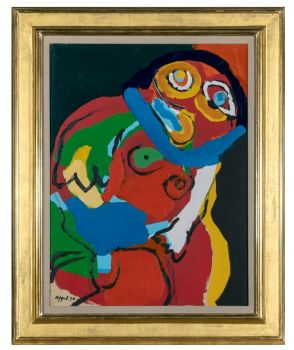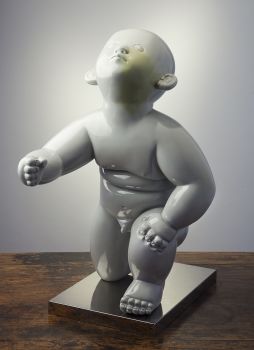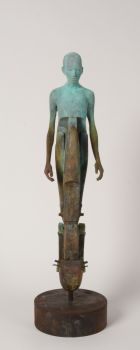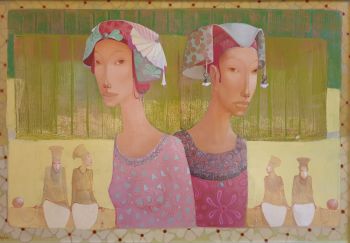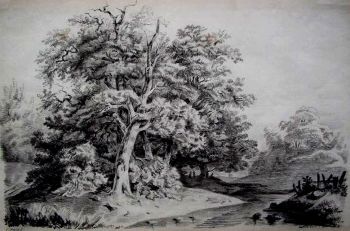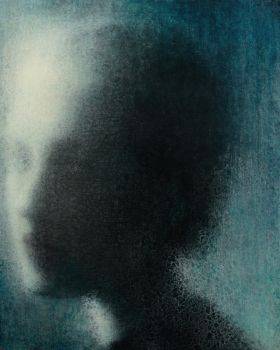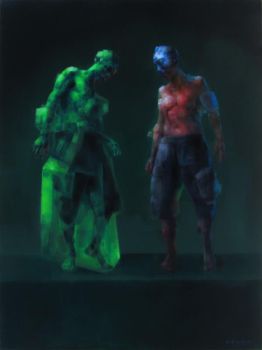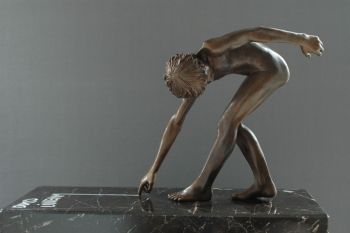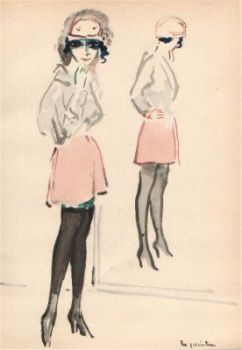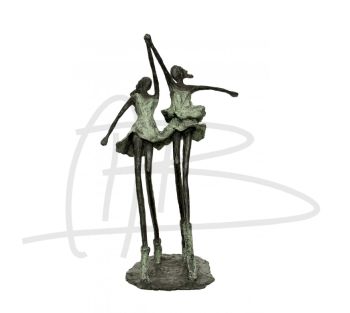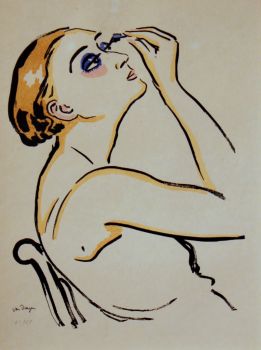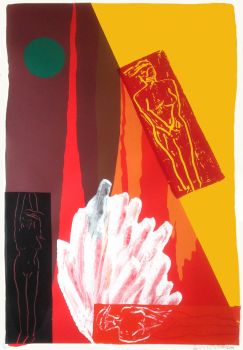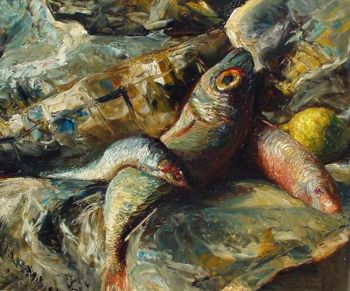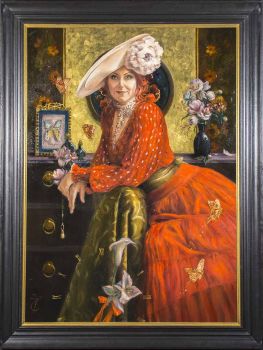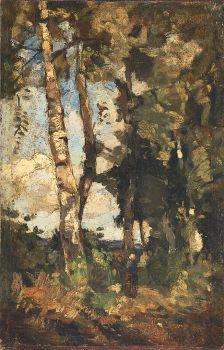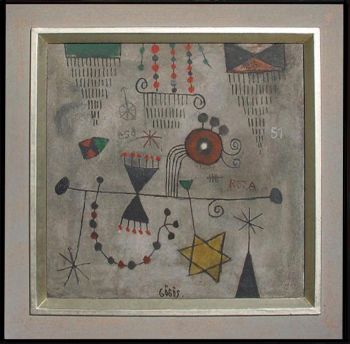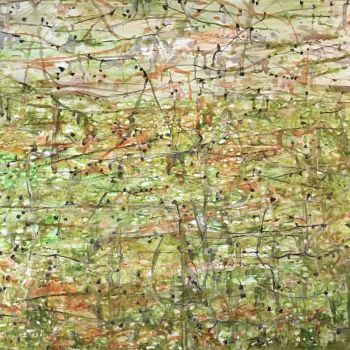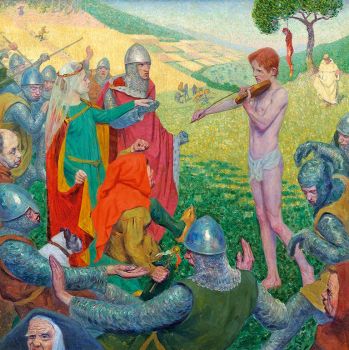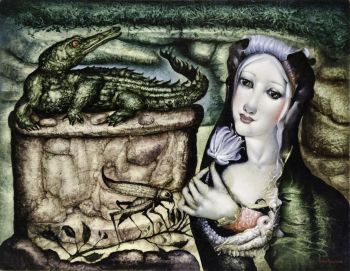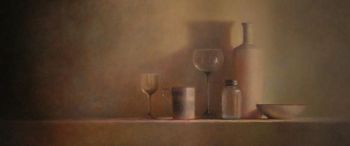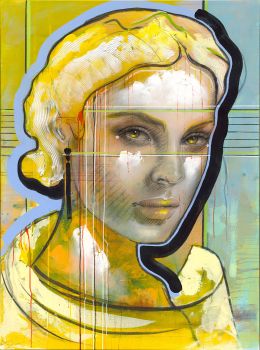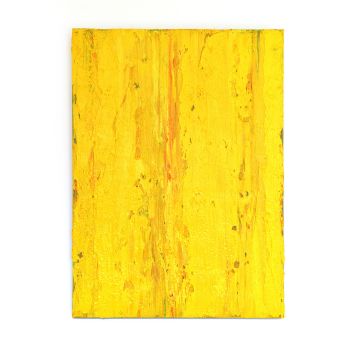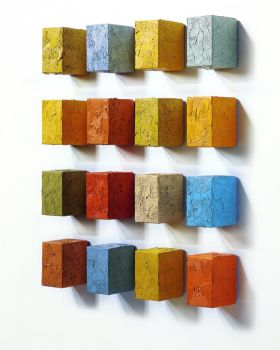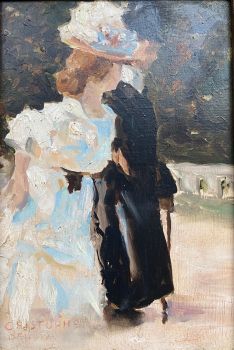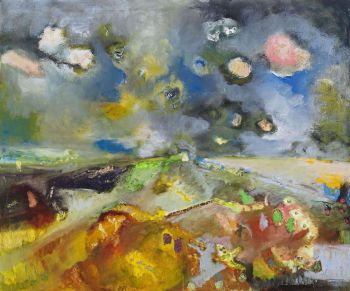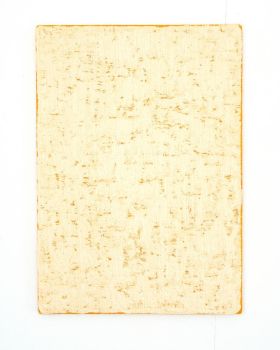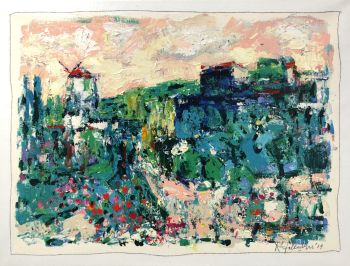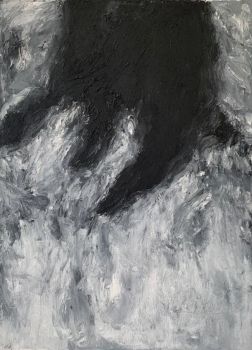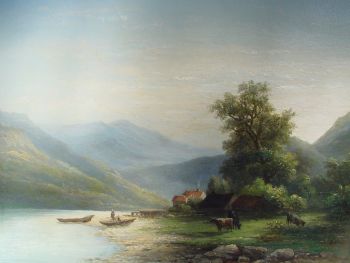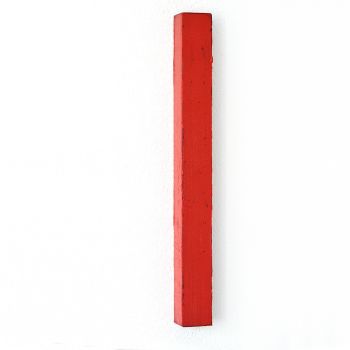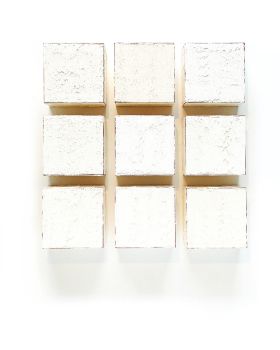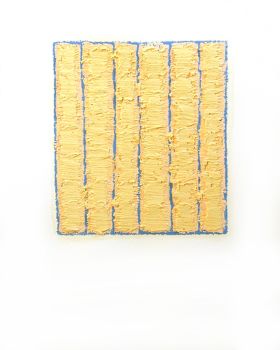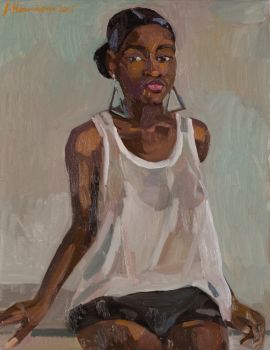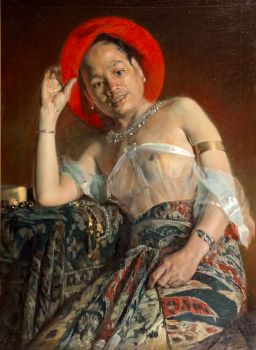Study of a Guarani man, Argentina, circa 1922 1922
José Moreno Carbonero
CanvasOil paintPaint
32 ⨯ 26 cm
Price on request
Zebregs & Röell - Fine Art - Antiques
- About the artworkJosé Moreno Carbonero (1858-1942)
Oil on canvas, H. 32.2 x W. 26 cm
Moreno Carbonero was born, brought up and studied in Malaga, Spain. In 1875, after a two-year stay in Morocco, he moved to Paris on a grant from the Malaga Provincial Council. He joined the studio of Jean-Léon Gérôme. A regular visitor, the famous art dealer Adolphe Goupil commissioned his first works, mainly small genre subject paintings. Between 1881 and 1884, Moreno Carbonero lived in Rome before moving to Madrid. There, he achieved his first success with his painting The Conversion of the Duke of Gandia, which is now in the Prado Museum. From then on, the artist specialized in history paintings, often on a large scale; the best example is The Entry of Roger de Flor into Constantinople, painted for the Madrid Senate in 1888, which hasn’t moved ever since. Besides being a historical painter, the artist was also a portraitist, painting elegant portraits of Madrid's high society (see, for instance, Purificacion Fontan, Marquise del Pazo de la Merced, 1908, Prado Museum, Madrid).
At the beginning of the 20th century, the Argentine government was preparing to celebrate the May Revolution, which started on May 18, 1810, and led to the independence of Argentina. The municipality of Buenos Aires, joining in the celebration, commissioned a historical painting dedicated to the founding of the capital from José Moreno Carbonero. Under time pressure, Moreno Carbonero produced a work with which he was dissatisfied and criticized when he arrived in Argentina in 1910. For this reason, in 1922, he asked for the work to be returned to him to correct it. He studied the city's history, the site and the event depicted in situ and made substantial changes to make the painting more historically accurate. The definitive work, wholly reworked, was placed in the municipal palace in 1924. It can still be admired in its original place.
The city of Buenos Aires was founded on June 11, 1580, by Juan de Garay under the name of the 'Santissima Trinidad y Puerto de Sant Maria del Buen Ayre'. In Moreno Carbonero's painting, Juan de Garay, in the centre of the composition, raises his sword before the foundation pillar. On the right, the notary Pedro de Xeres signs the foundation act; on the left, the friar Juan de Rivadeneira raises the cross, and the alderman Don Pedro de Quirós carries the royal standard. All around, men in arms can be seen, as well as representatives of the native people from the area, including a man from the Guarani ethnic group. The present painting is a preparatory sketch of the head of this figure. - About the artist
Born in Malaga on 24 March 1858, José Moreno Carbonero initially trained as an artist at the Higher School of Fine Arts in the city, where he was a pupil of Bernardo Ferrándiz and displayed an outstanding talent for painting from a very early age. After travelling to Seville and Paris on a grant awarded by the Malaga Diputación (provincial council), at the age of only twenty-one he executed his first large history painting there, El príncipe de Viana (“The Prince of Viana”, 1881), which heralded him as one of the great masters of the genre, as confirmed only a few years later by works as significant as La conversión del duque de Gandía (“The Conversion of the Duke of Gandía”, 1884) and the splendid Entrada de Roger de Flor en Constantinopla (“Entry of Roger de Flor into Constantinople”, 1884), which was commissioned by the senate and is indisputably one of the most important Spanish history paintings of the 19th century.
In 1898 Moreno became a member of the San Fernando Academy in Madrid and settled permanently in the city. Thereafter he lived comfortably in his mansion in Calle Miguel Ángel and was hailed as one of the most reputed portraitists of the high society, even though these works are the least appealing examples of his oeuvre. He taught Dalí and Picasso at the School of Fine Arts and received the highest decorations and honours during his lifetime, such as the crosses of Alfonso XII and Isabella the Catholic, among others. He was also made a grand officer of the Crown of Italy and of St Michael of Bavaria and a commander of the Polar Star of Sweden.
An extraordinarily prolific painter, in addition to history paintings and portraits he also produced genre and Orientalist scenes, paintings of human types and city views featuring monumental buildings. He is particularly notable for his many paintings illustrating episodes from literary works, especially Gil Blas and also Don Quixote, for which he developed a genuine passion in the last decades of his life. He died in Madrid on 15 April 1942.
Are you interested in buying this artwork?
Related artworks
- 1 - 4 / 24
- 1 - 4 / 24
Conrad Kickert
Still life with fish in a newspaper1900 - 1965
Prezzo su richiestaKunsthandel Pygmalion
Corstiaan Hendrikus de Swart
Mountain landscape with Lake1838 - 1900
Prezzo su richiestaKunsthandel Pygmalion
Rene Rietmeyer
''PORTRAIT OF JOSEPH KOSUTH - ROMA 2008''2008
Prezzo su richiestaEuropean Cultural Centre Collection
Rene Rietmeyer
"PORTRAIT OF YAYOI KUSAMA JUNE 1999"1999
Prezzo su richiestaEuropean Cultural Centre Collection
1 - 4 / 24Artista Sconosciuto
Olandesi in miniatura (Netsuke)1700 - 1900
Prezzo su richiestaZebregs & Röell - Fine Art - Antiques
Roland Strasser
Geisha giapponese20th century
Prezzo su richiestaZebregs & Röell - Fine Art - Antiques
Artista Sconosciuto
UN MODELLO GIAPPONESE DI UN NORIMONO, UN PALANQUIN1650 - 1700
Prezzo su richiestaZebregs & Röell - Fine Art - Antiques
1 - 4 / 12

